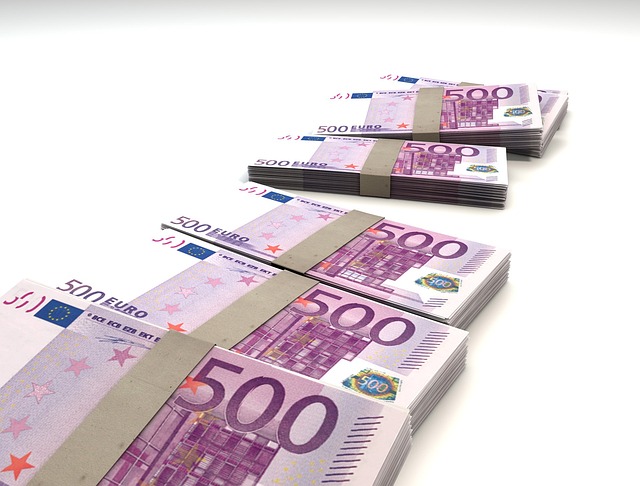The profit factor is one of the most important indicators when selecting an FX automated trading system (EA). The profit factor quantifies the earning potential of an EA; generally, the higher the value, the better the EA. However, it’s also important to understand that EAs with excessively high profit factors may carry potential risks. In this blog, we’ll dive into the details of the profit factor and discuss the hidden risks behind EAs with high profit factors.
1. What Is the Profit Factor?

Kiwango cha faida ni kipimo muhimu kinachotumika kutathmini faida ya mkakati au mfumo wa biashara. Inatumika hasa kwa kuchagua EA (mawasiliano ya awali ya biashara) na kutathmini ufanisi wa mikakati ya biashara ya uhuru.
Kiwango cha faida kinahesabiwa kama uwiano wa “faida jumla” kwa “hasara jumla” katika kipindi fulani. Faida jumla inahusisha jumla ya faida zote katika kipindi hicho, wakati hasara jumla inahusisha jumla ya hasara zote. Formula ya hesabu ni kama ifuatavyo:
Profit Factor = Total Profit / Total Loss
Ikiwa kiwango cha faida kinakuwa zaidi ya 1, ina maana mkakati ni wa faida kwa ujumla. Ikiwa ni chini ya 1, hasara inazidi faida.
Viashiria hivi hutumiwa kutathmini kwa uadilifu utendaji wa mkakati wa biashara. Wanabuni hutumia kiwango cha faida kutathmini ufanisi wa njia au mifumo yao ya biashara, kutambua maeneo yanayohitaji kuboreshwa, na kurekebisha mikakati ili kupata matokeo bora.
Katika sehemu inayofuata, tutajadili kwanini kiwango cha faida ni muhimu.
2. Why Is the Profit Factor Important?

Kiwango cha faida ni viashiria muhimu sana wakati wa biashara ya FX au kuchagua EA. Thamani hii inatumika kama kipimo cha kupima faida ya mkakati wa biashara, na inafanya kuwa muhimu kwa wanabuni wanaotaka kupata faida za muda mrefu.
Kiwango cha faida sio tu uwiano wa faida jumla kwa hasara jumla. Ikiwa nambari hii inazidi 1, ina maana faida inazidi hasara, ikielezea mkakati wenye uwezo wa kurudi kwa ufanisi. Kuweka kiwango cha faida mbele ni haipatikani ikiwa unataka kujenga mkakati wa biashara unaoshinda.
Hata hivyo, huwezi kutegemea tu kiwango cha faida. Factores nyingine lazima ziwezi kutathminiwa vizuri pia. Hapa chini ni baadhi ya vipengele muhimu vya kuzingatia wakati wa kutathmini kiwango cha faida:
1. Drawdown
Hesabu hasara kubwa ya kihistoria kwa mkakati na angalia uwiano wa hasara kwa faida jumla. Ikiwa kuweka chini ni kubwa, mkakati unachukua hatari kubwa zaidi.
2. Win Rate
Gawanya idadi ya biashara za kushinda kwa jumla ya biashara ili kupata kiwango cha ushindi. Kiwango cha juu cha ushindi ni chaguo la kufurahisha, lakini ni muhimu kulinganisha na kiwango cha faida.
3. Risk Management
Usimamizi wa hatari ni muhimu katika mkakati wowote wa biashara. Hatua za kupunguza hasara ni muhimu.
Kutathmini viashiria vizuri, ikiwemo kiwango cha faida, na kufanya maamuzi kulingana na falsafa yako ya biashara ni muhimu kwa mafanikio ya muda mrefu. Ingawa kiwango cha faida ni muhimu, usitegemei tu. Chukua njia ya pamoja na hakikisha unarekebisha na kuboresha mikakati yako ya biashara ili kudhibiti hatari na kukuza mali zako kwa muda.
3. How to Calculate the Profit Factor

Kuhesabu kiwango cha faida ni rahisi sana. Unagawanya tu faida jumla kwa hasara jumla. Hapa chini ni jinsi unavyofanya hatua kwa hatua:
Hesabu faida jumla na hasara jumla. – Kwa mfano, ikiwa faida jumla kutoka kwa biashara zote katika kipindi fulani ni $10,000 na hasara jumla ni $5,000, basi faida jumla ni $10,000 na hasara jumla ni $5,000.
Gawanya faida jumla kwa hasara jumla. – Formula ni kama ifuatavyo:
- Profit Factor = Total Profit / Total Loss
- Kwa mfano, ikiwa faida jumla ni $10,000 na hasara jumla ni $5,000,
- $10,000 / $5,000 = 2.0
- Kiwango cha faida ni 2.0.
The profit factor shows the ratio of total profit to total loss. It’s an important metric for measuring investment performance. The higher the value, the more efficiently your investments are working; generally, a value above 1.0 is desirable. For automated trading or EAs, a value between 1.2 and 1.5 is often considered good.
The profit factor is easy to calculate and is useful for quantifying investment performance. Make it a habit to calculate it regularly and use it as a reference for your investment decisions.
4. Ideal Target Value for the Profit Factor

The profit factor is a key indicator for evaluating the profitability of a trading strategy. For traders seeking long-term gains, an ideal average profit factor is often said to be “1.2 to 1.3.” Here are two reasons why this range is considered ideal:
1. Profit Is Generated Above 1.0
A profit factor above 1.0 means that total profits exceed total losses—in other words, the strategy is profitable. On the other hand, a profit factor below 1.0 likely means the strategy is generating losses.
2. Provides a Buffer
A profit factor of 1.2 or higher means your strategy has enough cushion to withstand future fluctuations and unforeseen events. If the profit factor is below 1.2, it may indicate there is not enough buffer to consistently generate profits.
However, a high profit factor isn’t always ideal. In risky trading, you must consider the balance between risk and return. Even if the profit factor is high, you need to determine if you’re comfortable with the associated risks.
The ideal target value for the profit factor also depends on your trading style, strategy, and risk tolerance. It’s important to evaluate performance using a combination of indicators, not just one metric.
Therefore, finding the right profit factor target for your own trading strategy—and striking the right balance—is the key to success.
5. Risks Hidden in EAs with High Profit Factors

EAs with high profit factors may seem attractive, but you need to be cautious. Here are some potential risks associated with EAs that have a high profit factor:
Over-Optimization (Overfitting)
Over-optimization occurs when an EA is excessively tailored to historical data, resulting in a high profit factor. However, such EAs may not perform well in new market conditions and can be unstable in real trading.
Low Number of Trades
EAs with high profit factors sometimes have very few trades in backtesting. A small number of trades means the performance data may not be statistically reliable and could simply be the result of chance. More trade data is necessary for validation.
High-Risk Trading Strategies
Some EAs may employ high-risk strategies to achieve a high profit factor. While these can yield big profits temporarily, they may also incur large losses when market conditions turn unfavorable.
Differences from Live Trading Conditions
In live trading, there are many factors that can affect EA performance. An EA showing a high profit factor may have been optimized without considering these real-world conditions, so it may not perform as well in actual trading.
For these reasons, you should evaluate EAs with very high profit factors with caution. Always run demo tests and make careful decisions before moving to live trading.
Conclusion
The profit factor is a very important indicator for evaluating the profitability of a trading strategy. While a value of 1.2 to 1.3 is generally considered ideal, you shouldn’t rely on this metric alone. It’s also important to consider other elements like drawdown, win rate, and risk management. While EAs with high profit factors can be appealing, there are risks such as over-optimization and aggressive trading strategies to watch out for. To succeed in trading, you need to properly evaluate a variety of metrics—including the profit factor—and make decisions based on your own trading philosophy. By continuously reviewing and improving your strategies, you can aim for long-term asset growth.
Frequently Asked Questions
What is the profit factor?
The profit factor is an important indicator used to evaluate the profitability of a trading method or system. It is calculated as the ratio of total profit to total loss. A value above 1 indicates profitability. This metric is used to objectively assess the efficiency of a trading strategy.
Why is the profit factor important?
The profit factor is very important when trading FX or selecting an EA. This value shows the profitability of a trading strategy, making it essential for traders aiming for long-term gains. However, don’t rely solely on the profit factor; also evaluate other aspects like drawdown, win rate, and risk management.
How is the profit factor calculated?
Calculating the profit factor is very simple: just divide total profit by total loss. For example, if total profit is $10,000 and total loss is $5,000, the profit factor would be 2.0. This indicator plays a key role in measuring investment performance.
What is an ideal target value for the profit factor?
For traders seeking long-term gains, an average profit factor of 1.2–1.3 is often considered ideal. This is not only because it indicates profitability above 1.0 but also because it provides a buffer against future market fluctuations. However, the ideal value depends on your risk-return balance, trading style, and risk tolerance.
The Profit Factor ni kipimo muhimu kwa kutathmini faida ya mkakati wa biashara. Blogu hii inatoa maelezo ya kina kuhusu […]
Reference Sites
✅よくある誤解は「プロフィットファクターは高ければ高いほど良い」というものです。プロフィットファクターが2以上のEAは遅…
プロフィットファクターとは、総利益を総損失で割って求められる数値のことです。総利益が総損失に対して何倍かの比率を表し、1…








